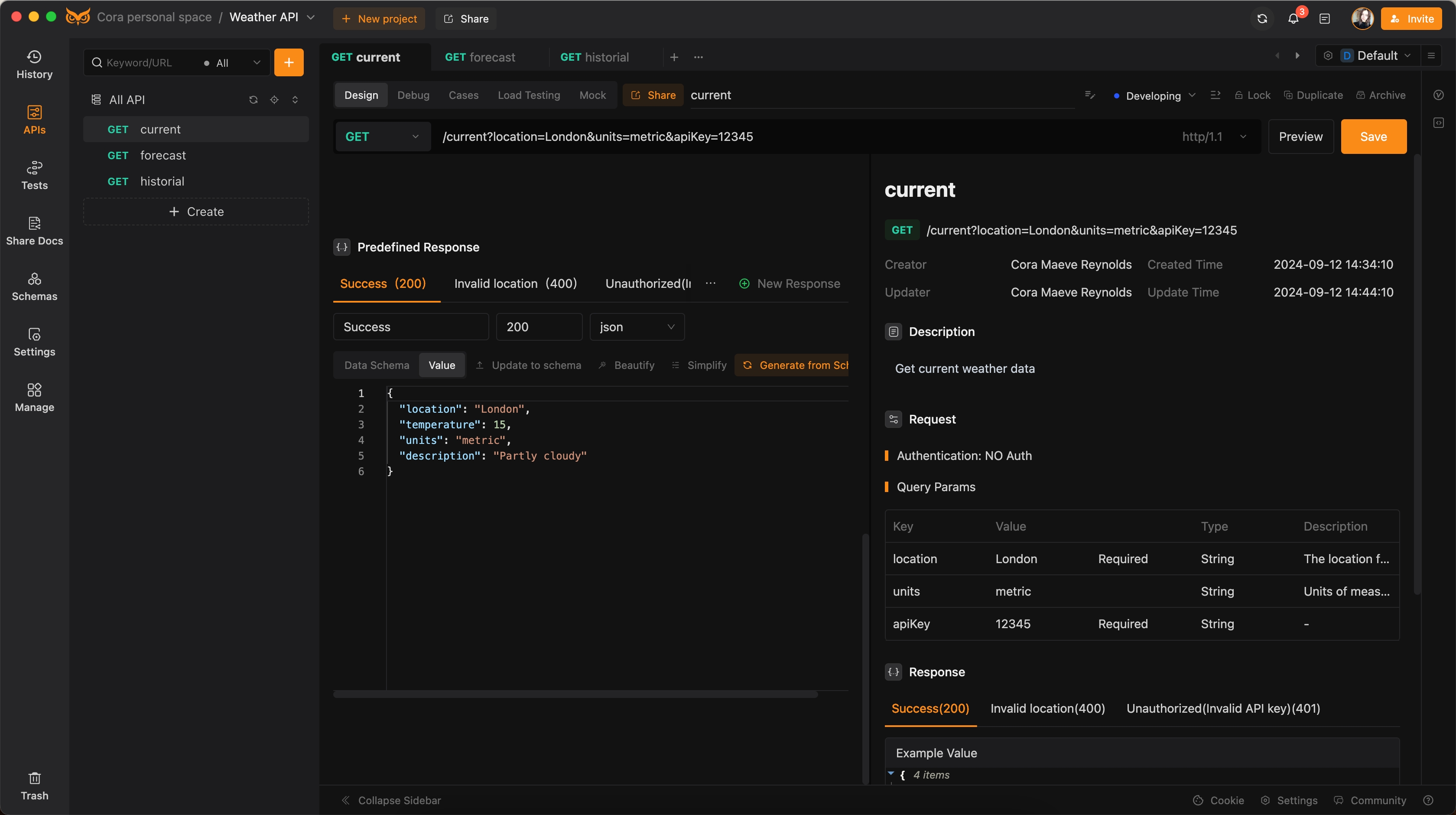Best Practices for Writing API Documentation
Effective API documentation is vital for usability and developer engagement. Clear guidelines boost adoption, while poor documentation frustrates users. This article discusses best practices to create exceptional API documentation that empowers developers and drives success.
Best Practices for Writing API Documentation
API documentation is essential to an API's usability and success. Well-documented APIs significantly improve the developer experience, accelerate adoption, and cultivate a strong developer community. On the other hand, poor documentation can cause confusion, frustration, and mistakes, ultimately reducing adoption rates. This article explores advanced best practices for writing API documentation that is clear, comprehensive, and developer-friendly, coupled with examples for better understanding.

1. Define the Purpose of Your API
Before you even start writing the documentation, have a clear understanding of your API’s purpose. What problems does it solve? Who is your target audience? What are the primary use cases?
- Target Audience: Customize your documentation to meet the specific needs of your users. Are you writing for experienced developers, content creators, or perhaps both?
- Use Cases: Clearly outline common use cases to provide context and meaning to your API's functions.
- Example: If you are documenting a weather API, its purpose might be to provide real-time weather data for various applications, primarily targeting developers who are building weather apps or integrating weather data into existing services.
2. Structure Your Documentation for Ease of Navigation
A well-structured document is easier to navigate and understand. Use logical sections and sub-sections.
- Introduction: Provide an overview of what your API does and why it’s useful.
- Getting Started: Offer a quick start guide that includes setup instructions, authentication processes, and a simple example to get users up and running quickly.
Example:
## Introduction
The WeatherAPI provides real-time weather information for any location in the world. It can be used to get current weather conditions, forecasts, and historical weather data.
## Getting Started
To start using WeatherAPI, you need to sign up at our [website](#) to obtain an API key.
- Endpoints Overview: Present a table or list that summarizes all available endpoints.
- Detailed Endpoints Documentation: For each endpoint, include the following:
Example:
## Endpoints Overview
| Endpoint | Method | Description |
|----------------|--------|---------------------------------|
| `/current` | GET | Get current weather data |
| `/forecast` | GET | Get weather forecast |
| `/historical` | GET | Get historical weather data |
## Current Weather Data
### Endpoint URL
`/current`
### HTTP Method
`GET`
### Summary
Retrieve current weather conditions for a specific location.
### Parameters
- **location** (string, required): The location for which to retrieve weather data.
- **units** (string, optional): Units of measurement (metric or imperial).
### Example Request
```sh
curl -X GET "https://api.weather.com/current?location=London&units=metric&apikey=your_api_key"
Example Response
{
"location": "London",
"temperature": 15,
"units": "metric",
"description": "Partly cloudy"
}
Error Codes
- 400: Invalid location
- 401: Unauthorized (Invalid API key)
Design in EchoAPI

3. Detailed Explanations and Use Cases
General explanations are helpful, but providing detailed, real-world use cases adds significant value.
- Scenario-Based Examples: Write examples based on common scenarios. This contextualizes the information and makes it more relatable.
Example:
## Use Cases
### Scenario: Displaying Current Weather in a Mobile App
To display current weather conditions in your mobile app, you can use the `/current` endpoint to fetch the latest data based on the user's location.
#### Step-by-Step Guide
1. Obtain the user's location coordinates.
2. Make a request to the `/current` endpoint with the location parameter.
3. Parse the JSON response to extract temperature and weather conditions.
4. Display the data in the app’s weather widget.
```sh
curl -X GET "https://api.weather.com/current?location=40.7128,-74.0060&units=metric&apikey=your_api_key"
{
"location": "New York",
"temperature": 71.6,
"units": "imperial",
"description": "Clear sky"
}
Example in EchoAPI

4. Use a Consistent Style and Employ Clear Language
Consistency and clarity are key to good documentation.
- Terminology: Use consistent terminology throughout your documentation.
- Language: Avoid jargon unless it’s standard in your target audience’s domain. Keep sentences concise and straightforward.
- Formatting: Use consistent formatting for headings, code snippets, and emphasis.
5. Document Authentication and Authorization Thoroughly
Security is often the biggest hurdle for new users of any API. Make sure you cover authentication and authorization in detail.
- API Keys and Tokens: Explain how to obtain and use API keys, OAuth tokens, or other methods of authentication.
Example:
## Authentication
WeatherAPI uses API keys to authenticate requests. You can obtain an API key by signing up on our website.
### How to Use an API Key
Pass your API key as a query parameter in your requests:
```sh
curl -X GET "https://api.weather.com/current?location=London&apikey=your_api_key"
Markdown in EchoAPI

6. Include Code Samples and SDKs
Code samples can bridge the gap between abstract concepts and practical implementation.
- Language-Specific Examples: Provide examples in multiple popular programming languages.
- SDKs: If you offer SDKs, document how to install and use them.
- Copy and Paste: Ensure that examples are easy to copy and paste to encourage users to try them out.
Example:
## Code Samples
### Python Example
```python
import requests
response = requests.get(
"https://api.weather.com/current",
params={"location": "London", "apikey": "your_api_key"}
)
data = response.json()
print(f"Temperature: {data['temperature']}°C, Description: {data['description']}")
Markdown in EchoAPI

JavaScript Example
const fetch = require('node-fetch');
fetch("https://api.weather.com/current?location=London&apikey=your_api_key")
.then(response => response.json())
.then(data => {
console.log(`Temperature: ${data.temperature}°C, Description: ${data.description}`);
});
7. Provide Interactive Documentation
Interactive documentation can dramatically improve usability.
- EchoAPI: Use tools like EchoAPI to create interactive, self-documenting APIs.
- API Explorers: Implement API explorers that allow users to test endpoints directly within the documentation.

8. Error Handling and Troubleshooting Sections
Help users understand what might go wrong and how to fix it.
- Common Errors: Document common errors and provide troubleshooting tips.
- Error Responses: Clearly define what each error code means and possible solutions.
Example:
## Error Handling
### Common Errors
- **400 Bad Request**: The location parameter is missing or invalid.
- **401 Unauthorized**: Invalid API key.
### Example Error Response
```json
{
"error": {
"code": 401,
"message": "Invalid API key"
}
}
Troubleshooting Tips
- Ensure your API key is active and correctly included in your request.
- Verify that the location parameter is correctly formatted.
9. Versioning and Changelog
API versions and updates can have a major impact on users.
- Versioning: Clearly document how versioning is managed and provide instructions on specifying versions in API requests.
- Changelog: Maintain a detailed changelog to keep users informed about updates, deprecated features, and newly added functionality.
Example:
## Versioning
To specify API versions, include the version number in the URL:
```sh
curl -X GET "https://api.weather.com/v1/current?location=London&apikey=your_api_key"
Changelog
v1.1.0 - 2024-09-12
- Added support for metric and imperial units.
- Improved error messages for missing parameters.
v1.0.0 - 2023-01-01
- Initial release with current weather, forecast, and historical data endpoints.
10. Comprehensive Testing and Validation
Before publishing the documentation, ensure its accuracy and completeness.
- Review Process: Have multiple team members review the documentation.
- External Feedback: Collect feedback from beta users or the developer community to ensure the documentation meets their needs.
- Automated Testing: Use automated tools to verify that all documented endpoints work as described.
11. Accessibility and Internationalization
Make your documentation accessible and understandable by a global audience.
- Accessibility: Ensure your documents comply with accessibility standards (e.g., WCAG).
- Localization: If your API serves a global audience, consider translating your documentation into multiple languages to enhance accessibility.

Conclusion
High-quality API documentation is the cornerstone of a successful API. It enables developers to integrate and utilize your services efficiently, driving adoption and satisfaction. By following these best practices—covering clear structuring, detailed explanations, and interactivity—you can ensure your documentation is not only informative but also enjoyable to use.




 EchoAPI for VS Code
EchoAPI for VS Code

 EchoAPI for IntelliJ IDEA
EchoAPI for IntelliJ IDEA

 EchoAPl-Interceptor
EchoAPl-Interceptor

 EchoAPl CLI
EchoAPl CLI
 EchoAPI Client
EchoAPI Client API Design
API Design
 API Debug
API Debug
 API Documentation
API Documentation
 Mock Server
Mock Server








